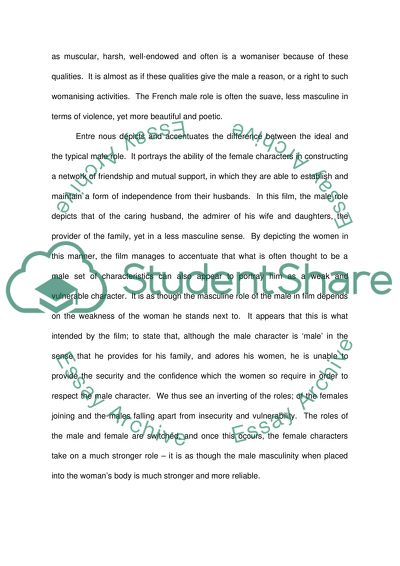Cite this document
(The Male Role in French Cinema Essay Example | Topics and Well Written Essays - 2000 words, n.d.)
The Male Role in French Cinema Essay Example | Topics and Well Written Essays - 2000 words. Retrieved from https://studentshare.org/visual-arts-film-studies/1566187-the-role-and-representation-of-men
The Male Role in French Cinema Essay Example | Topics and Well Written Essays - 2000 words. Retrieved from https://studentshare.org/visual-arts-film-studies/1566187-the-role-and-representation-of-men
(The Male Role in French Cinema Essay Example | Topics and Well Written Essays - 2000 Words)
The Male Role in French Cinema Essay Example | Topics and Well Written Essays - 2000 Words. https://studentshare.org/visual-arts-film-studies/1566187-the-role-and-representation-of-men.
The Male Role in French Cinema Essay Example | Topics and Well Written Essays - 2000 Words. https://studentshare.org/visual-arts-film-studies/1566187-the-role-and-representation-of-men.
“The Male Role in French Cinema Essay Example | Topics and Well Written Essays - 2000 Words”. https://studentshare.org/visual-arts-film-studies/1566187-the-role-and-representation-of-men.


